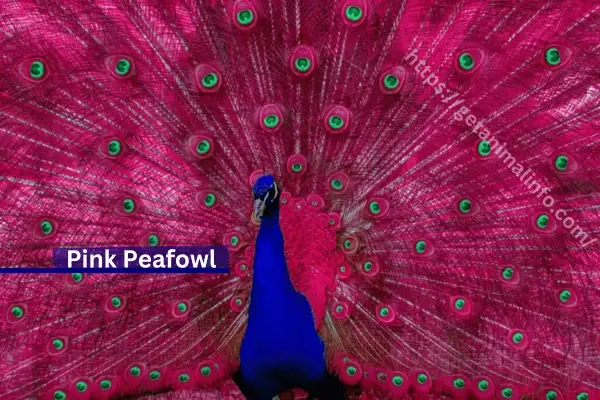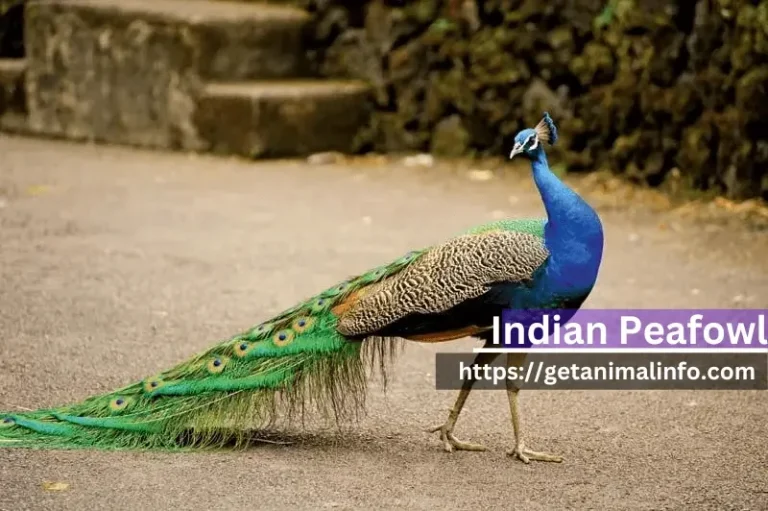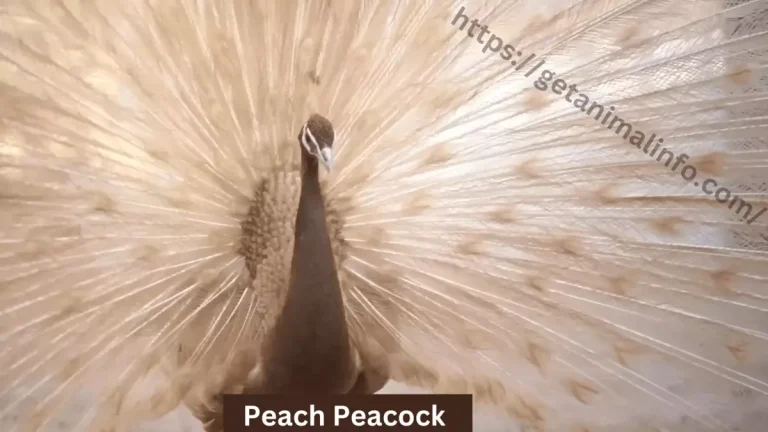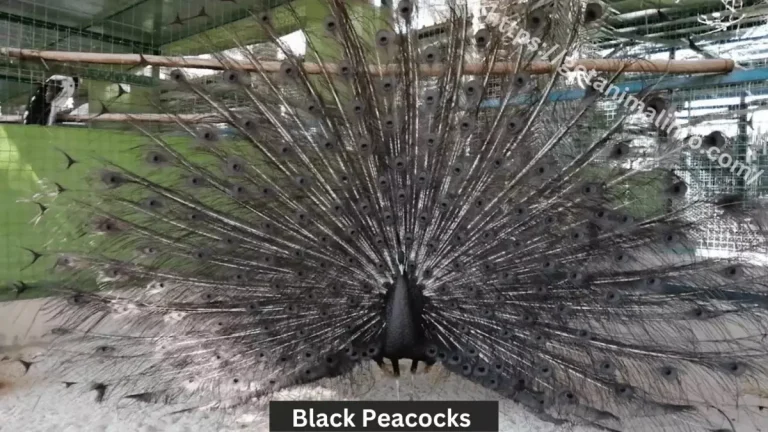Congo Peafowl: What Makes Them Stand Out?

An African country, the Democratic Republic of the Congo, said that the Congo peafowl would be its recognized national bird. You may also call these birds “African peafowl” because they are from Africa. They are different types of peafowl. Not only does the Congo peafowl bird live in the Congo area, but it is also called the African peafowl. They can be found in the Democratic Republic of the Congo, which is in the middle of Africa. There are both main and secondary lowland woods in the Congo Democratic Republic where you can see these birds.
The Congo peafowl are also very big birds, just like the Indian peafowl and the green peafowl. Without question, these are the most beautiful birds in the world. They are interesting to look at because of how beautiful they are. Should you get the chance to see them, you will not be able to take your eyes off of this beautiful bird. You can see groups of these birds together, like small families. People who are really into taking care of pets probably have at least one Congo peafowl bird in their home.
Click here to more information about peafowl.
You can also read:
General Information
Characteristic Overview
Personality Overview
Buying Rare Peafowl
They are harder to find and cost more than the other peafowl. According to some sources, a young bird costs between $250 and $500, while a chick costs between $100 and $120. Buyers should get a pair of birds or more than one bird because the price per bird will go down and birds are happier when they are with other birds.
Unique Birds Found in Africa
In 1936, peafowl from the Congo were found in the lowland forest of the Democrats of the Congo. There was no way for Dr. Chapin to tell who they were as soon as he saw them for the first time. He has, however, never seen another type of peafowl with feathers that are as long and rusty brown as theirs. As a next step, he went to the Royal Museum of Central Africa to compare the peafowl he had just found in the Congo to the peacock bird he had found in India. The way both birds looked was different from one another.
The year 1955 was when Dr. Chapin found seven more Congo peafowl birds. When you look closely, you can see that Congo peafowl birds have traits of both guinea fowl and peafowl. This means that they are related to both of these bird species. Peafowl birds from the Congo are smaller than those in the genus Pavo. However, this type of peafowl is the only phasianid that is that big in Africa.
Peacocks, Peahens, and Congo Varieties
Anyone who knows anything about birds of prey knows that males are called peacocks and females are called peahens. Both male and female Congo birds are stunningly beautiful and interesting to look at and interact with. The Congo peacock and the peahen are the two types of young Asian peafowl. Because of the unique markings on their bodies, peafowls, both male and female, are thought to be from different species. The colors on Congo peahens aren’t as bright as they are on Congo peacocks, even though both birds are smaller. When we look at both groups together, this is what we find.
Characteristics of Congo Peacocks
Congo peacocks have gray heads and scarlet throats when naked. You can find them in a lot of different bright colors that stand out. The head of a peacock is split into two separate parts. The tail of a peahen is shorter than the tail of a peacock. When we look at their color, we can see that the tips of their tails are blue and green, and the rest of them are black. Birds of prey have eyes that are a very dark brown color. In addition, some parts of a Congo peacock’s body are tinged with violet and green, and their feathers are a deep blue color all over.
The size
The colors
The Congo peahen, on the other hand, is much smaller than the Congo peacock. The length of their bodies is thought to be between 600 and 700 millimeters. The wings of the Congo peacock are about 300 to 330 millimeters long. It is thought that the Congo peacock weighs around 1.5 to 2.5 kilograms. On the front crest of the male bird are long white hairs that can be up to 80 to 90 millimeters long. On the back crest of the male bird are black feathers that can be up to 30 to 35 millimeters long. A male Congo peafowl’s tail is between 200 and 240 millimeters long. They have very thin spurs on their back legs, which are between 95 and 110 millimeters long.
The Congo peacock has a lot of bright colors on different parts of its body. One bird, the Congo peacock, has a gray head and red skin on its neck. The eyes of a peacock are brown, and the tip of the tail of a Congo peacock is violet-blue. They also have dark blue feathers. Based on the single color of their bodies, we can tell that they come in different shades, such as brown, copper, golden, yellow, green, and blue. Congo peacocks’ legs are a mix of blue and gray.
Characteristics of Congo Peahens
One of the most interesting female birds is the Congo peahen, even though it is smaller than the Congo peacock and doesn’t have as many bright colors. This is something we’ve already talked about. Their bodies are brown, green, and very bright. Their tails aren’t as wide as peacocks’ tails. There are many ways in which the Congo female chicks and adult Congo peahens look alike, such as the colors they wear. They also have brown eyes that look a lot like Congo peacocks’. Besides being gray, a Congo peahen’s legs are about the size of a pencil.
The size
The colors
When compared to a peacock, a Congo peahen is a little smaller. Its length is between 580 and 650 millimeters. When it comes to weight, a Congo peahen should be around 1.5 to 2 kg. Their tail is about 190 to 230 millimeters long. It takes a Congo peahen 80 to 90 millimeters to grow a hind limb. Their crest is dark brown and isn’t very long.
There are many different types of peahens from the Congo, such as brown, green, blue, yellow, and more. Their different body parts are all a different color. There are shades of green, brown, and black on the lower part of the Congo peahen’s tail. The top part of the tail has a black-green tint. A Congo peahen has a brown crest on top of its head.
| Measurement | Male | Female |
|---|---|---|
| Height | 25-29 Inches (63.5-73.66 cm) | 25-28 Inches (63.5-71.12 cm) |
| Length | 23.62-27.56 Inches (60-70 cm) | 22.83-26.77 Inches (57.98-66.99 cm) |
| Weight | 3.31-5.51 lbs. (1.5-2.5 kg) | 3.31-4.41 lbs. (1.5-2 kg) |
Origin
They are from the Democratic Republic of the Congo, but you can find them in several different African cultures. The Democratic Republic of the Congo has also named them their national bird, just like India does with the Indian Peafowl.
The population
The IUCN has put Congo peafowl on its list of species that are in danger of going extinct. Information from their data shows that between 3,000 and 15,000 peafowl are living there. Despite this, the number of these birds is quickly decreasing over time because of habitat loss, logging, and changes in farming methods. The main reason people trade their pets is to try to use them to hunt birds.
At this point, there are only about 10,000 adult Congo peafowl birds on the IUCN list. The destruction of habitat and hunting have made this problem worse. Based on our best guess, there are only about 12 to 15 million of these animals left in the wild right now.
Diet of Congo Peafowl
Like Indian peafowl birds, Congo peafowl birds eat a lot of different things. In other words, they can eat both meat and vegetarian meals. Fruits, vegetables, insects, and spiders make up most of their food. There are other things they eat besides bugs, like ant eggs, nuts, and dry meals. Birds like these are always looking for snakes because they like to eat small snakes. The fruits and vegetable seeds that farmers put in their fields are what they eat.
Their ideal food had to be full of nutrients and include both carbs and protein for them to grow properly.
Protein can be found in many foods, such as frogs, snakes, lizards, and other animals. They needed grains, fruits like bananas and berries, veggies like tomatoes, and other foods that were similar to carbs.
Benefits of Keeping Congo Peafowl as Pets
It’s possible that Congo peafowl birds and other peafowl types and subspecies would make great pets. These birds make great family pets because they look nice and are friendly. You should not close your eyes at all while they are widening their bright wings. If you love bright colors and things that are colorful, a Congo peafowl is a great pet for you. Before you take them home, you should learn about what to feed them, how to care for them, and how to clean them. This will make sure you know everything they need from you.
These birds might have some problems, like getting out of control and damaging important things like your furniture or a part of your car’s body, but if you know how to take care of them and keep them in a healthy environment, you won’t have to worry about any of these issues when you own them. If you decide to keep your Congo peafowl bird as a pet, you must make sure it gets the care it needs.
Pros and Cons Congo Peafowl
Pros
Cons
Understanding Vocal Changes in Different Situations
Peafowl can make different sounds at different times of the day and night because their voice tone changes depending on the situation. The Congo peahen’s voice would sound very different from the Congo peacock’s. We usually get a call from them that sounds like “may-awe.”
When it gets dark here. Because they scream so loudly, they might bother you. That’s why you should keep them out of your room at night; otherwise, you won’t be able to sleep well.
“Rro-ho-ho-o-a” and “gone-growth” are two more sounds that Congo peacock birds sometimes make. Ladies of the Congo peafowl make both “hoot-dash” and “hej-hoh-hej-hoh” sounds. These names may sound strange when spoken, but the sounds of Congo peafowl birds are sure to be interesting. When they are mating with a member of a different gender or showing that they are there, for example, their vocal sounds change.
Observe the Congo Peafowl
There are a lot of different parts of the care they need that you need to be aware of. The first thing you should do is make sure your Congo peafowl birds have a safe place to live. You must give them enough water so that they don’t get dehydrated. As you read this piece, you should add some of the extra care tips we talked about for Congo peafowl birds to your daily routine.
Grooming
The second most important thing you should do for the Congo peafowl birds is to clean them after making sure they have a healthy meal. Taking a shower and getting their nails clipped is what they do to keep themselves clean. Giving your pet a bath with shampoo and conditioner once a week is important to keep them looking great. Being clean from the inside out will keep their body in good shape. Guinea peafowl claws grow very quickly, so it’s important to remember to cut them off. They could hurt themselves or other pets if you don’t.
Care for Health
Every month at the end, you should take your Congo peafowl birds to the vet to make sure they are healthy and free of any injuries. This is what you need to do to keep them healthy. They know that the quality of their medical care will have a big effect on how long they live. People who own pets are responsible for keeping an eye on their health. The sounds they make are another way to look at the health problems they are having.
Life span
You can make your Congo peafowl bird live longer by giving it very good care in its food, grooming, and environment. In the wild, they don’t have any safety, food, or medical care, so they don’t last as long. We are aware of this. Here is a study of the average life spans of male and female peafowl birds, as well as a look at the average life spans of peafowl birds in the wild and captivity.
| Gender | Lifespan in Wildlife | Lifespan in Captivity |
|---|---|---|
| Congo peacock bird | 10 to 25 years | 35 to 45 years |
| Congo peahen bird | 10 to 20 years | 30 to 40 years |
The Congo’s Peafowl in Wildlife
Some Congo peafowl birds live in jungles. Their lives are different there because they have to find their food. They also have to keep their pea chicks safe from wild animals like wolves and lions. Since they can’t get groomed in the wild, even if they did manage to stay alive, it would be a good accomplishment. Because of this, Congo peafowl birds live shorter lives in the wild than they do as pets.
How to Take Care of a Congo Peafowl
After looking at the table that shows how long Congo peafowl live in different places, you will understand why they live longer in captivity than in the wild. A healthy and safe environment must be provided for them to increase their lives. They live in two very different environments, and their lifespans are very different between the two. This is because they get great care when they grow up in a loving and caring home. You should pay attention to how your Congo peafowl bird lives if you want it to live longer.
Frequently asked questions
Conclusion
The article talks about Congo peafowls in great detail, including how they were found and how long they have been around. Many people have different opinions about how long they live and how many of them there are. It has been brought to our attention that these birds are bright and attractive, even though they are small compared to other types of peafowl. There is also talk about how their lives are different when they are in captivity compared to when they are in the wild. We are sure that you will be able to take good care of them if you pet them.






